Nagasaki, a city with a rich past and vibrant present, offers a unique blend of historical significance, cultural diversity, and stunning natural beauty. Once a major international trading port, Nagasaki developed a fascinating mix of Japanese, Chinese, and European influences, shaping its architecture, cuisine, and traditions. Today, the city stands as a symbol of resilience, embracing both its tragic history and modern charm.
Whether you’re drawn to historical sites, scenic landscapes, or unique culinary experiences, Nagasaki has something for everyone. Here’s a guide to the best places to explore in this captivating city.
1. Nagasaki Peace Park – A Tribute to Resilience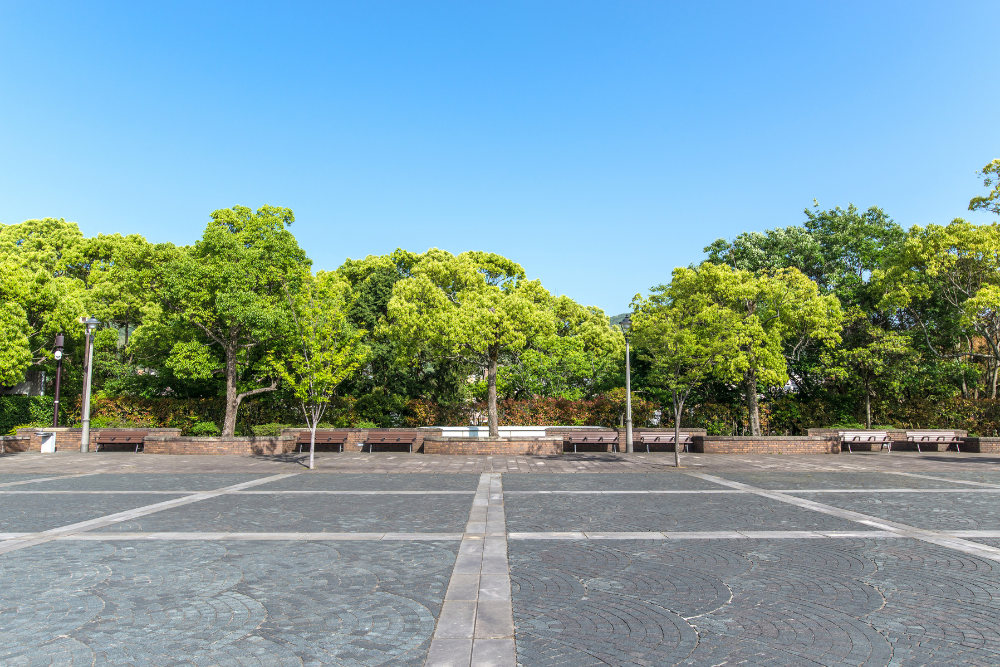
Nagasaki is best known for being one of the two cities affected by the atomic bomb in 1945. The Nagasaki Peace Park serves as a solemn reminder of this event while promoting a message of peace and hope for the future.
Highlights:
- Peace Statue – A 10-meter-tall monument symbolizing peace and remembrance.
- Hypocenter Park – The exact spot where the atomic bomb was dropped, now marked by a black stone pillar.
- Nagasaki Atomic Bomb Museum – A powerful exhibition detailing the events and aftermath of the bombing.
Best Time to Visit:
- August 9th (anniversary of the bombing) for peace ceremonies.
- Spring or autumn for pleasant weather.
2. Glover Garden – A Glimpse into Nagasaki’s International Past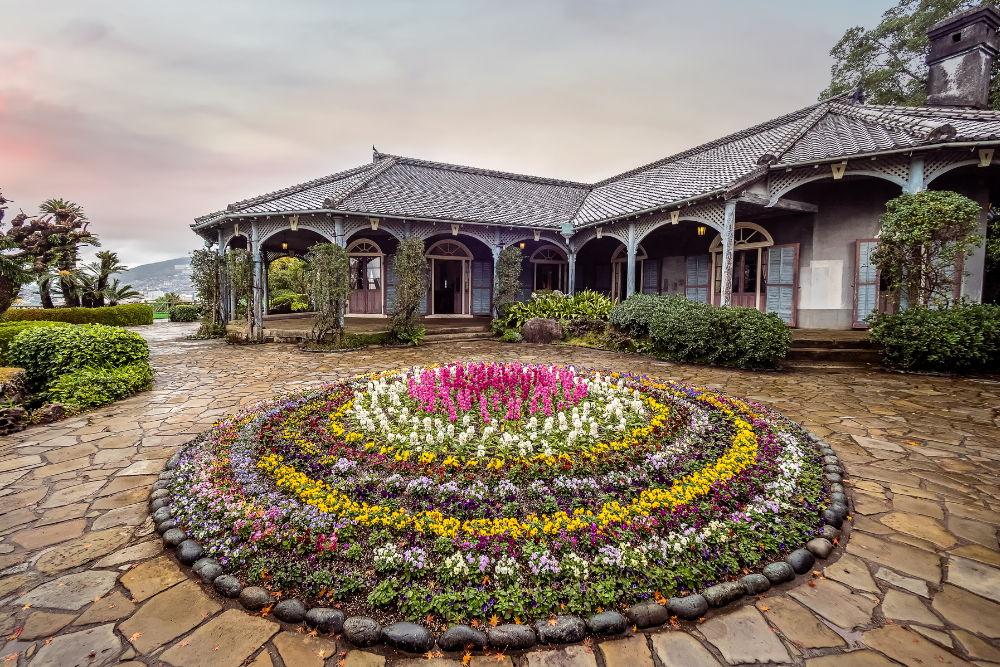
Nagasaki was Japan’s first city to open to foreign trade during the Edo period, leading to a unique blend of Western and Japanese culture. Glover Garden is a collection of colonial-style homes built by Western merchants in the late 19th century.
Highlights:
- Glover House – Japan’s oldest Western-style residence, built by Scottish merchant Thomas Glover.
- Panoramic city views from the garden, especially at sunset.
- Western-Japanese fusion architecture, showcasing Nagasaki’s international influences.
Best Time to Visit:
- Spring (March–April) for cherry blossoms.
- Evening for illuminated city views.
3. Dejima – The Former Dutch Trading Post
During Japan’s period of isolation (1639–1853), Dejima was the country’s only window to the outside world. This man-made island served as a Dutch trading post and played a vital role in Japan’s modernization.
Highlights:
- Restored historical buildings, offering insight into Japan’s trade history.
- Traditional Dutch-Japanese fusion architecture.
- Interactive exhibits on foreign influences in Nagasaki.
Best Time to Visit:
- Anytime of year, as the site is indoors and well-preserved.
4. Mount Inasa – One of Japan’s Top Night Views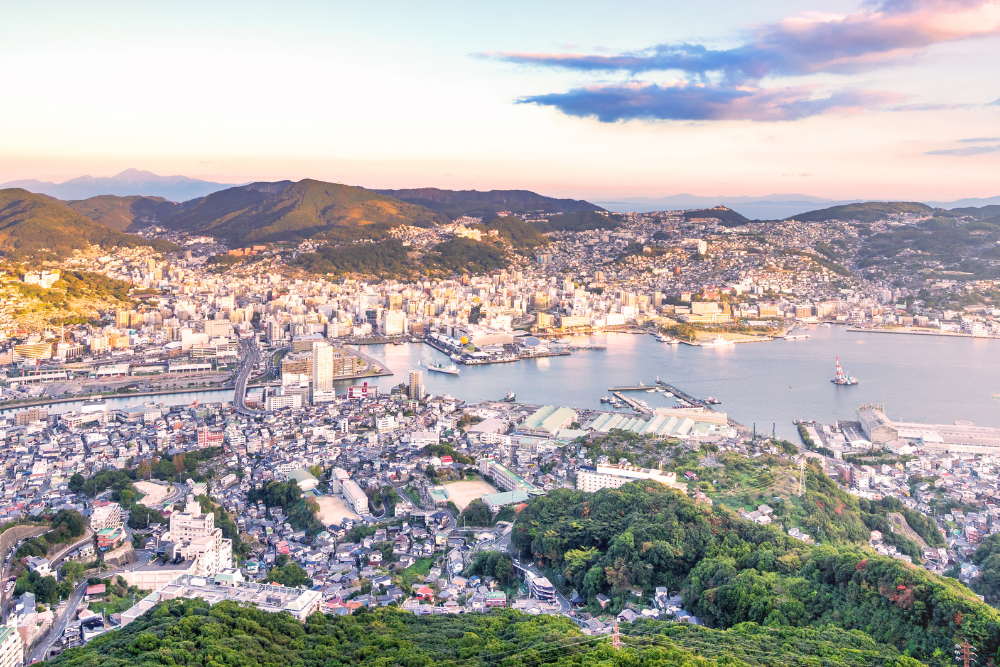
For one of the most breathtaking panoramic views in Japan, take the ropeway to Mount Inasa’s summit. The glittering city lights of Nagasaki at night have earned it a place among Japan’s top three night views, alongside Kobe and Hakodate.
Highlights:
- Mount Inasa Observatory – A 360-degree view of Nagasaki’s illuminated cityscape.
- Cable car ride with stunning scenery.
- Romantic atmosphere, perfect for couples.
Best Time to Visit:
- Nighttime (after sunset) for the best city lights view.
5. Chinatown and Shinchi District – A Taste of Nagasaki’s Chinese Heritage
Nagasaki is home to Japan’s oldest Chinatown, established in the 17th century by Chinese merchants. Today, it remains a vibrant hub of Chinese culture and cuisine.
Highlights:
- Authentic Chinese food, including champon (a famous Nagasaki noodle dish).
- Lively Lunar New Year celebrations, featuring dragon dances and lanterns.
- Historic temples and shrines with Chinese influences.
Best Time to Visit:
- During Nagasaki Lantern Festival (late January–early February) for a spectacular display of lights and cultural performances.
6. Hashima Island (Gunkanjima) – The Haunting “Battleship Island”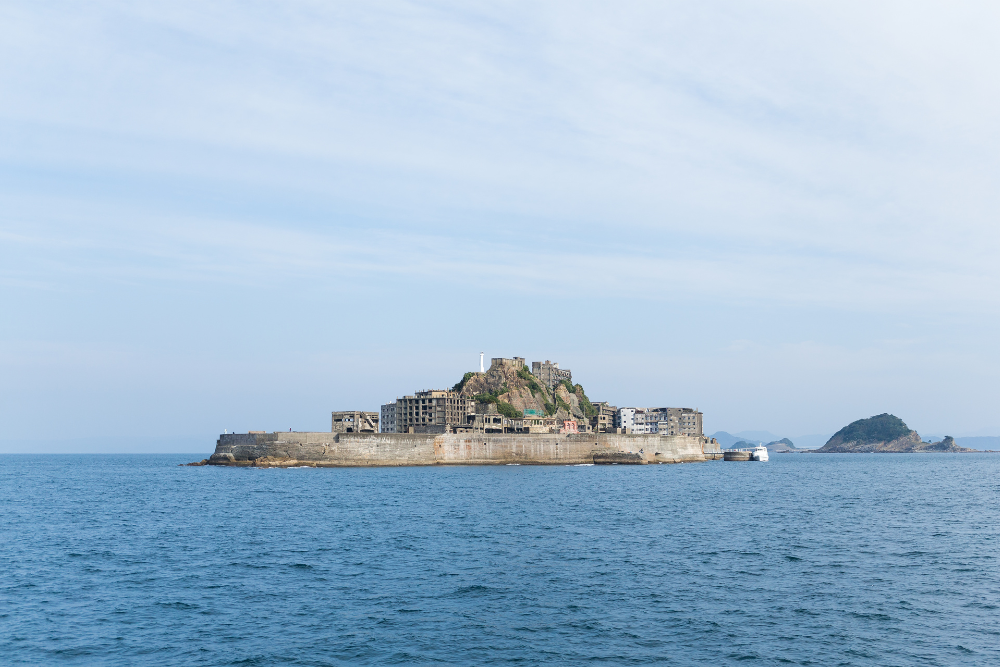
For those interested in urban exploration and abandoned places, Hashima Island, also known as Gunkanjima (“Battleship Island”), is a must-visit. Once a thriving coal-mining community, the island was abandoned in the 1970s and is now an eerie yet fascinating UNESCO World Heritage Site.
Highlights:
- Ruins of a once-bustling industrial city in the middle of the sea.
- Guided boat tours that explain the island’s history.
- A glimpse into Japan’s rapid industrialization.
Best Time to Visit:
- Spring or autumn, when the sea is calm for boat tours.
7. Meganebashi (Spectacles Bridge) – The Most Photogenic Spot in Nagasaki
One of Nagasaki’s most iconic landmarks, Meganebashi (“Spectacles Bridge”) is Japan’s oldest stone arch bridge, built in 1634. The bridge gets its name from its reflection in the river, which resembles a pair of glasses.
Highlights:
- A picturesque and historic bridge, perfect for photography.
- Romantic legend – Couples who find a heart-shaped stone near the bridge are said to have good luck in love.
- Beautiful scenery during cherry blossom season.
Best Time to Visit:
- Spring (March–April) for cherry blossoms.
- Evening for stunning illuminated reflections.
8. Nagasaki’s Unique Cuisine – A Fusion of Cultures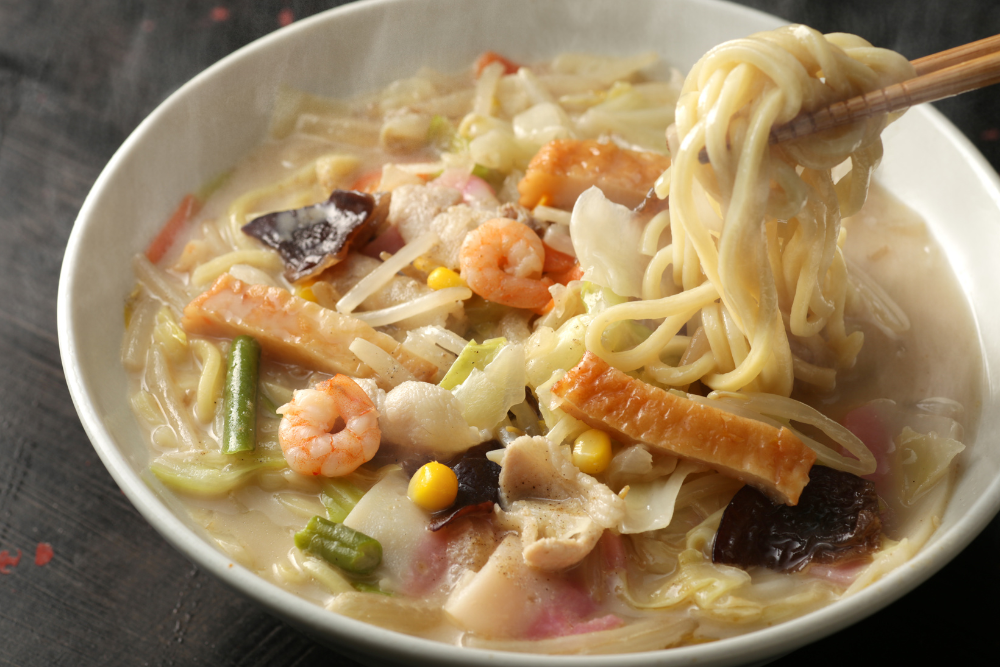
Nagasaki’s history as a trading port has led to a diverse and unique culinary scene, blending Japanese, Chinese, and Western influences.
Must-Try Dishes:
- Nagasaki Champon – A noodle dish inspired by Chinese cuisine, with a mix of seafood, pork, and vegetables.
- Castella Cake – A Portuguese sponge cake that became a Nagasaki specialty.
- Sara Udon – Crispy noodles topped with a rich, savory sauce.
Best Places to Eat:
- Shinchi Chinatown for champon and Chinese-inspired dishes.
- Fukusaya for the best Castella cake.
Conclusion
Nagasaki is a city like no other in Japan, where history, culture, and modern charm blend seamlessly. Whether you’re exploring its historic trading ports, stunning night views, or unique cuisine, Nagasaki offers a deeply enriching and unforgettable experience.












